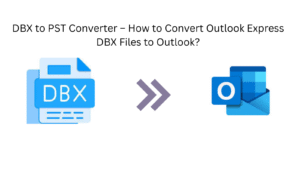Choosing the right tech stack for your website is one of the most critical decisions you’ll make during the development process. The technologies you select will determine your website’s speed, scalability, security, and long-term maintainability. Whether you’re starting a new online business or investing in custom website development, partnering with a reliable web development company ensures your tech choices align with your goals.
So, how do you choose the right tech stack for your website? Let’s explore the key considerations.
What Is a Tech Stack?
A tech stack is a combination of programming languages, frameworks, libraries, and tools used to build and run a website or web application. It includes:
- Frontend (client-side): What users see and interact with (e.g., HTML, CSS, JavaScript, React, Vue.js).
- Backend (server-side): The behind-the-scenes logic and database handling (e.g., Node.js, PHP, Python, Ruby on Rails).
- Database: Where data is stored (e.g., MySQL, MongoDB, PostgreSQL).
- Server and Hosting: Where your website lives online (e.g., AWS, Azure, DigitalOcean).
- Understand Your Website’s Purpose and Complexity
Before selecting a tech stack, clarify your website’s goals. Are you launching a simple portfolio site, a full-scale e-commerce platform, or a custom SaaS application?
- For a basic business site, lightweight frameworks may be sufficient.
- For complex applications, you’ll need more robust backend technologies and scalable architecture.
A professional web development company can assess your requirements and recommend the best stack accordingly.
- Consider Future Scalability
Your website should be built not just for today but for tomorrow’s growth. Choosing scalable technologies ensures your site can handle increased traffic, added features, and business expansion.
This is especially important for startups and businesses investing in custom website development. Frameworks like React, Node.js, and Django are popular for their flexibility and scalability.
- Evaluate Developer Availability and Community Support
Even the most powerful tech stack is useless if you can’t find experienced developers to work with it. Choose technologies that are well-documented, widely supported, and have a strong developer community.
Top Website development services typically use mainstream, proven technologies to ensure ease of hiring, future maintenance, and faster development cycles.
- Factor In Budget and Development Speed
Some technologies require more development time or specialized expertise, which can affect cost. For example:
- Open-source technologies (like PHP or Python) can be budget-friendly.
- Cutting-edge or niche tools may require more investment.
A seasoned web development company will help balance performance with cost, ensuring you get the best value from your website development services.
- Prioritize Security and Performance
Security should be a top priority, especially if you’re handling user data or online transactions. Choose tech stacks that support secure authentication, encrypted communications, and regular updates.
Performance is equally important—slow websites drive users away. Technologies like Next.js (for server-side rendering) or caching tools like Redis can greatly enhance site speed.
- Don’t Forget About SEO and Mobile Optimization
Your tech stack should support SEO-friendly structures and mobile responsiveness. Frameworks that allow for clean code, fast load times, and structured content will help your website rank better in search engines.
When you invest in custom website development, make sure your tech stack aligns with SEO best practices and delivers an excellent mobile experience.
Conclusion: Let the Experts Guide You
Choosing the right tech stack can be overwhelming, but you don’t have to do it alone. Partnering with a trusted web development company ensures your technology choices are guided by experience and aligned with your business strategy. From planning to launch, professional website development services can help you build a fast, secure, scalable, and future-proof website.
Your tech stack isn’t just about code—it’s the foundation of your digital presence. Make the right choice, and you’ll set your business up for long-term success.





